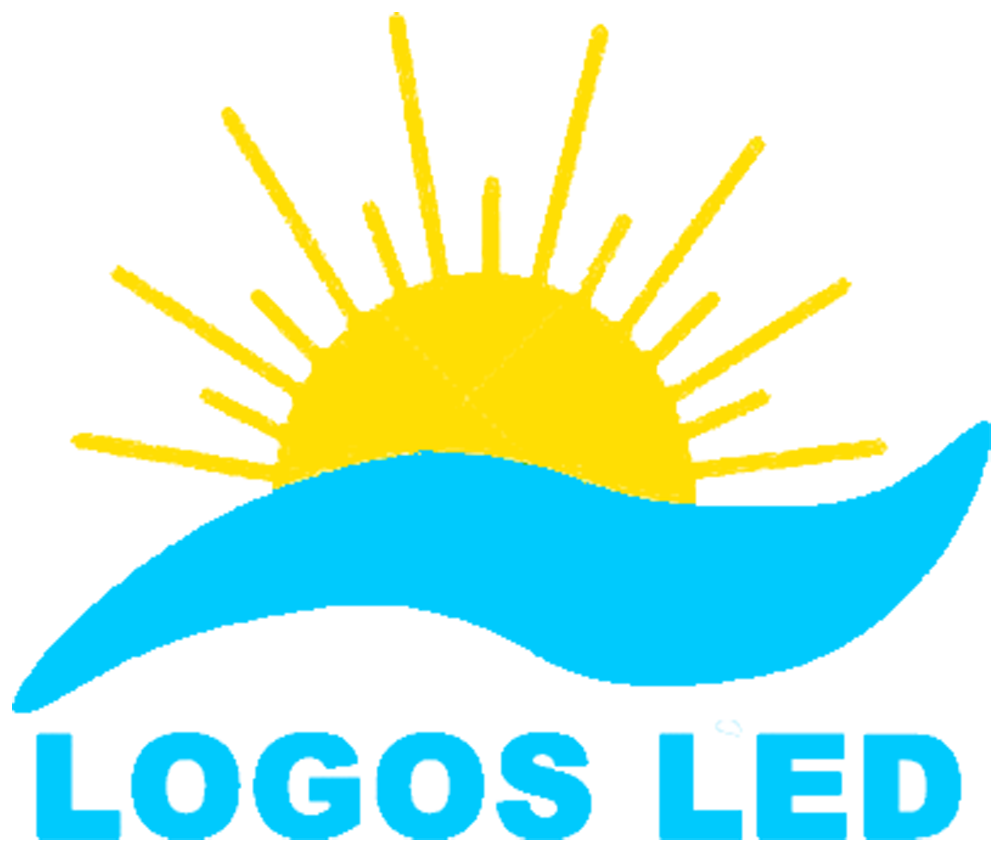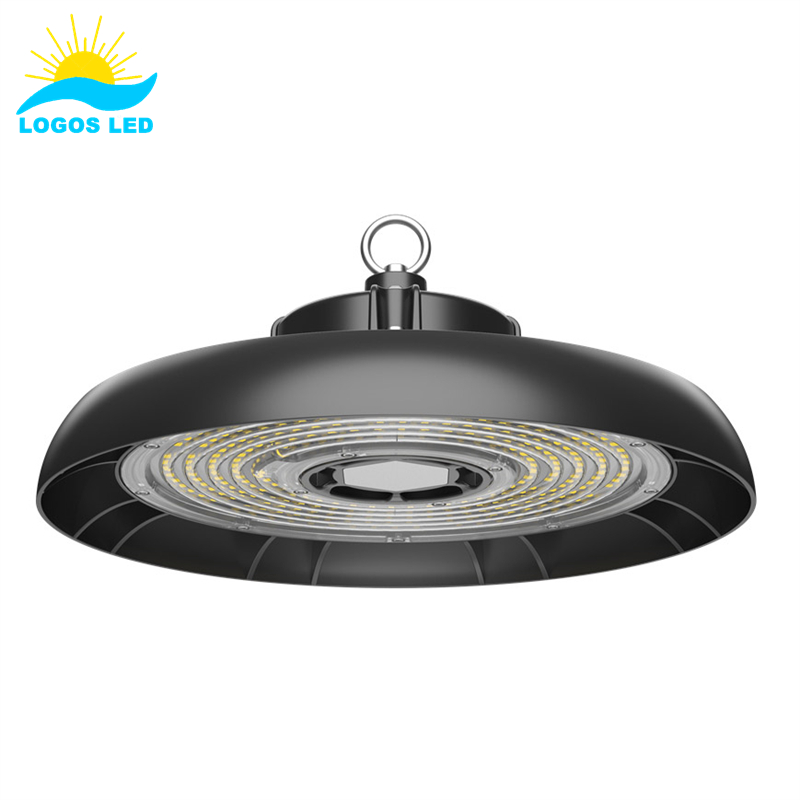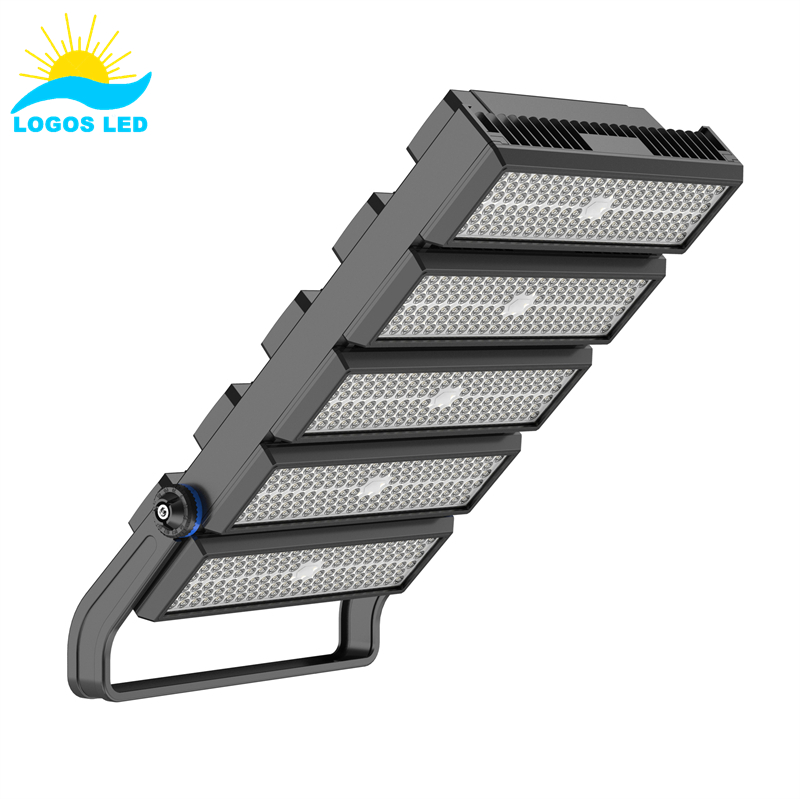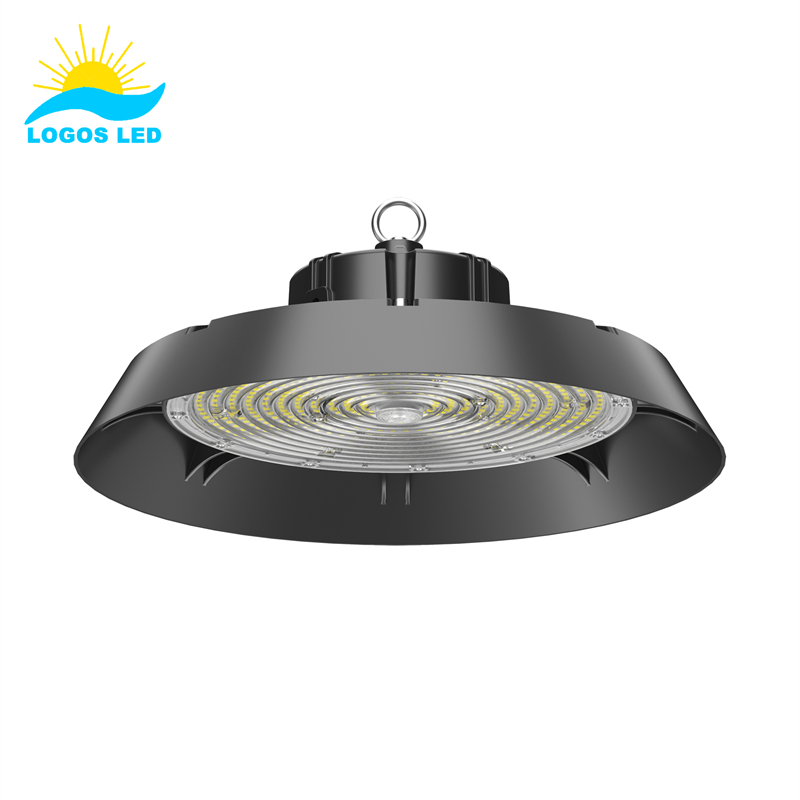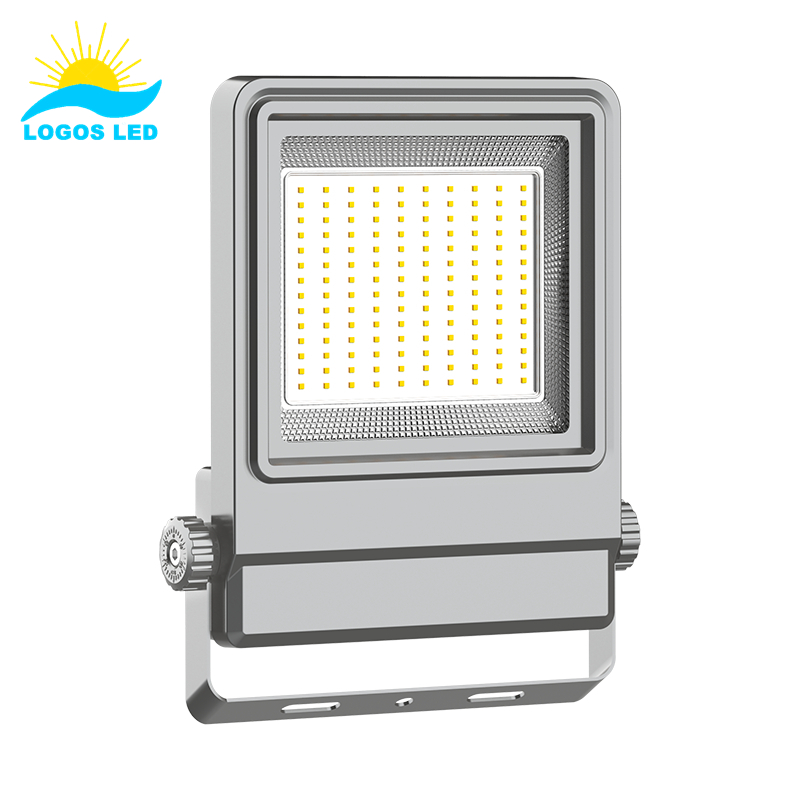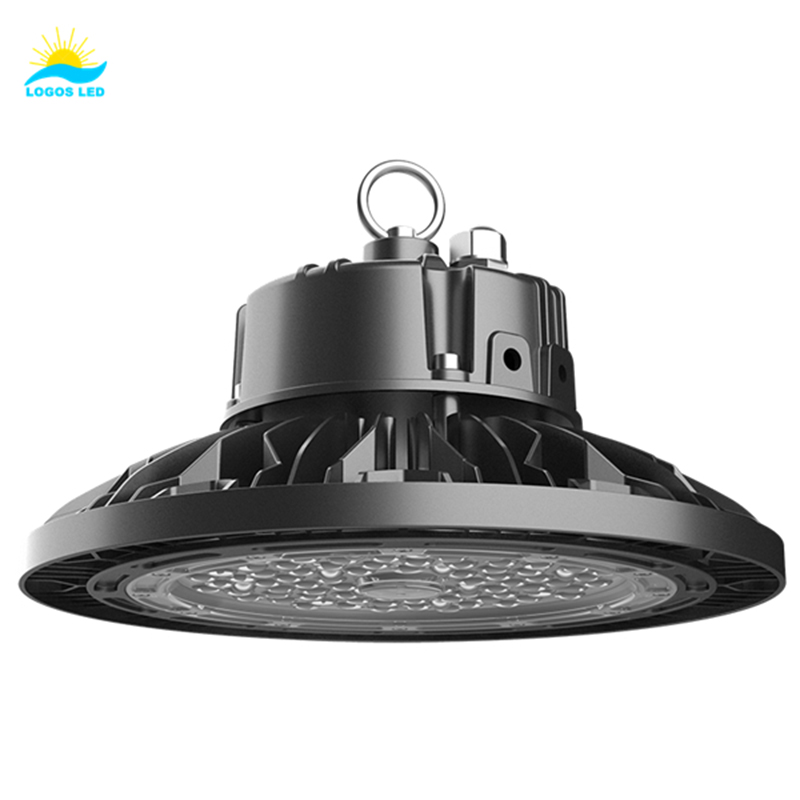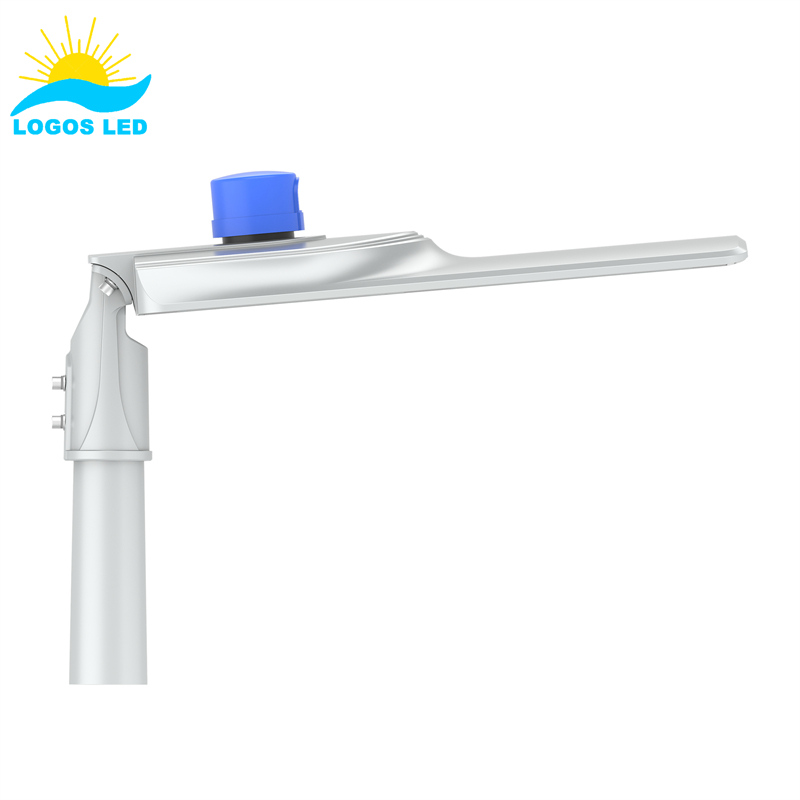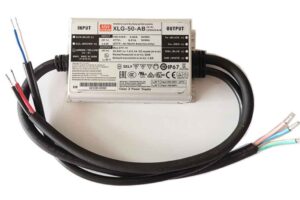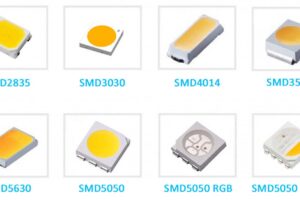Ever watched a football match ruined by poor lighting? Players stumble, fans are frustrated, safety risks skyrocket. Read on to discover how many lumens and watts your football field needs.
If you’re planning to install lights for your football stadium or upgrading your existing lights, understanding lumens and watts is essential. Lumens measure how bright a light is, whereas watts measure power consumption. Depending on if you have a professional stadium, school field, or small recreational area, standard luminosity can range widely—from 75,000 lumens for smaller fields up to half a million lumens or more for professional matches. Choosing LED stadium lights helps lower electricity bills because they provide higher lumens with fewer watts. Here’s the complete guide on the lumens and wattage requirements for different football field standards.
Let’s dive deeper and learn how to properly illuminate your football stadium at any level and budget.
Table of Contents
Football Field Lighting Standards Explained
When it comes to lighting sports venues, adhering to established standards is essential. Organizations like FIFA and UEFA create these standards to ensure optimal conditions for players, officials, and spectators. Here’s a closer look at these standards:
Importance of Lighting Standards
- Safety for Players:
- Proper lighting reduces the risk of accidents by ensuring players can see the ball and each other clearly. It also minimizes shadows on the field that could obscure visibility.
- Enhancing Spectator Experience:
- Well-lit fields improve the viewing experience for both in-person spectators and those watching broadcasts. Good lighting brings the action to life, highlighting every play and movement.
- Broadcasting Requirements:
- Professional broadcasts require higher brightness and uniform lighting to ensure clear visibility on TV. High-quality broadcasts might demand illumination levels exceeding 1,000 Lux to capture detailed and vivid images.
Key Lighting Specifications
- Lux Levels:
- Professional Stadiums: Typically require over 1,000 Lux to meet broadcasting and commercial standards.
- Amateur or Recreational Fields: Generally need between 200-300 Lux, focusing on basic visibility and safety.
- Uniformity and Coverage:
- Lights must be evenly spaced to prevent dark spots and shadows on the field. This consistent lighting helps maintain a uniform level of brightness across the entire playing surface.
- Glare Control:
- Special attention is given to minimizing glare, which can distract players and hinder their performance. Properly angled fixtures and diffused lighting help achieve this.
- Color Temperature:
- Often set to a daylight-like temperature (around 5000K) to simulate natural lighting conditions, enhancing visibility and reducing eye strain.
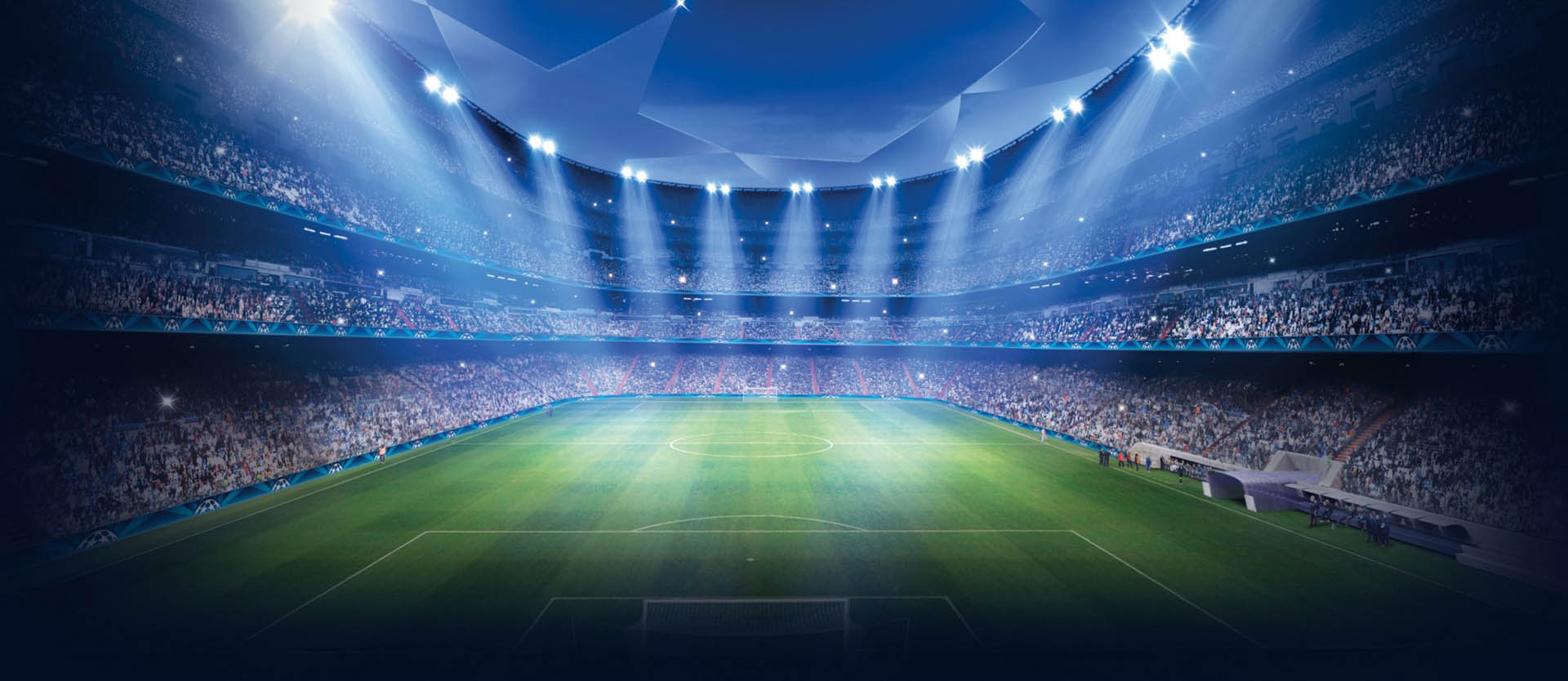
Lumens Requirement for Sports Field: What Does Your Field Demand?
Lumens measure how much light your fixtures produce, and the requirements vary based on field size and game purpose. For professional or televised stadiums, the lumen requirement can exceed 500,000 due to the need for higher illuminance levels to meet broadcast standards and ensure excellent visibility. High-school or collegiate-level games typically require between 150,000 and 300,000 lumens to provide adequate lighting for player performance and fan experience.
For smaller, recreational, or amateur fields, around 75,000 to 150,000 lumens may suffice, balancing cost and illumination needs. It’s essential to accurately determine your field’s lumens requirement to avoid overspending on unnecessarily high-lumen lights, which can lead to increased costs without added benefits. Properly assessing these needs ensures efficient lighting solutions that enhance safety and performance without excess expenditure.

Minimum illumination values required according to the UEFA standards for football field lighting
Watts vs Lumens for Stadium Lights: What’s More Important?
When evaluating stadium lights, understanding the difference between watts and lumens is crucial. Watts indicate how much electricity a light uses, while lumens measure the brightness produced. LED lights have revolutionized the field by delivering higher brightness with lower wattage consumption compared to traditional metal halide lamps, which required thousands of watts for adequate brightness.
LED fixtures might use just half the wattage that metal halide fixtures do for comparable brightness, which translates into significant reductions in electricity bills. While lumens are most important for ensuring visibility and performance on the field, watts are crucial for maintaining power efficiency and managing monthly energy costs. Balancing both is key to achieving optimal lighting conditions with economic benefits.
The Importance of Uniform Illumination in Sport Venue Lighting Design
Over the years, customers often tell me about visibility problems from uneven illumination. Dark spots, too much glare in certain areas, or shadow lines cause issues in gameplay. It’s vital to understand Sport Venue Lighting Design practices. Uniform illumination ensures players see clearly and perform safely. Good uniformity means distributing lights evenly around your field so no part gets excessive or inadequate brightness. Achieving uniform illumination usually requires custom design software analysis. Your exact pole height, number, placement, and fixture angle must be accurately calculated based on your venue.
How to Calculate the Exact Lumens and Watts You Need?
Calculating the exact lumens and watts needed for your sports field involves a few key steps:
- Determine Field Size and Lux Requirement: Identify the size of your field in square meters and the required brightness level in lux (lumens per square meter). For example, a 100m x 50m field (5000 square meters) might require 300 lux for sufficient illumination.
- Calculate Total Lumens: Multiply the lux requirement by the total field area. Using the example above, 5000 square meters x 300 lux results in 1,500,000 total lumens needed.
- Determine Number of Fixtures: Divide the total lumens by the lumens output of each fixture. If each fixture provides 150,000 lumens, you would need 10 fixtures to meet the requirement (1,500,000 lumens / 150,000 lumens per fixture).
- Calculate Watts Required: Consider the efficacy of your fixtures in lumens per watt. A higher efficacy means fewer watts are needed. For instance, if your fixtures have an efficacy of 130 lumens per watt, you can calculate the total wattage required by dividing total lumens by this number (1,500,000 lumens / 130 LPW = approximately 11,538 watts).
This method ensures you meet both the illumination needs and energy efficiency goals for your sports field.
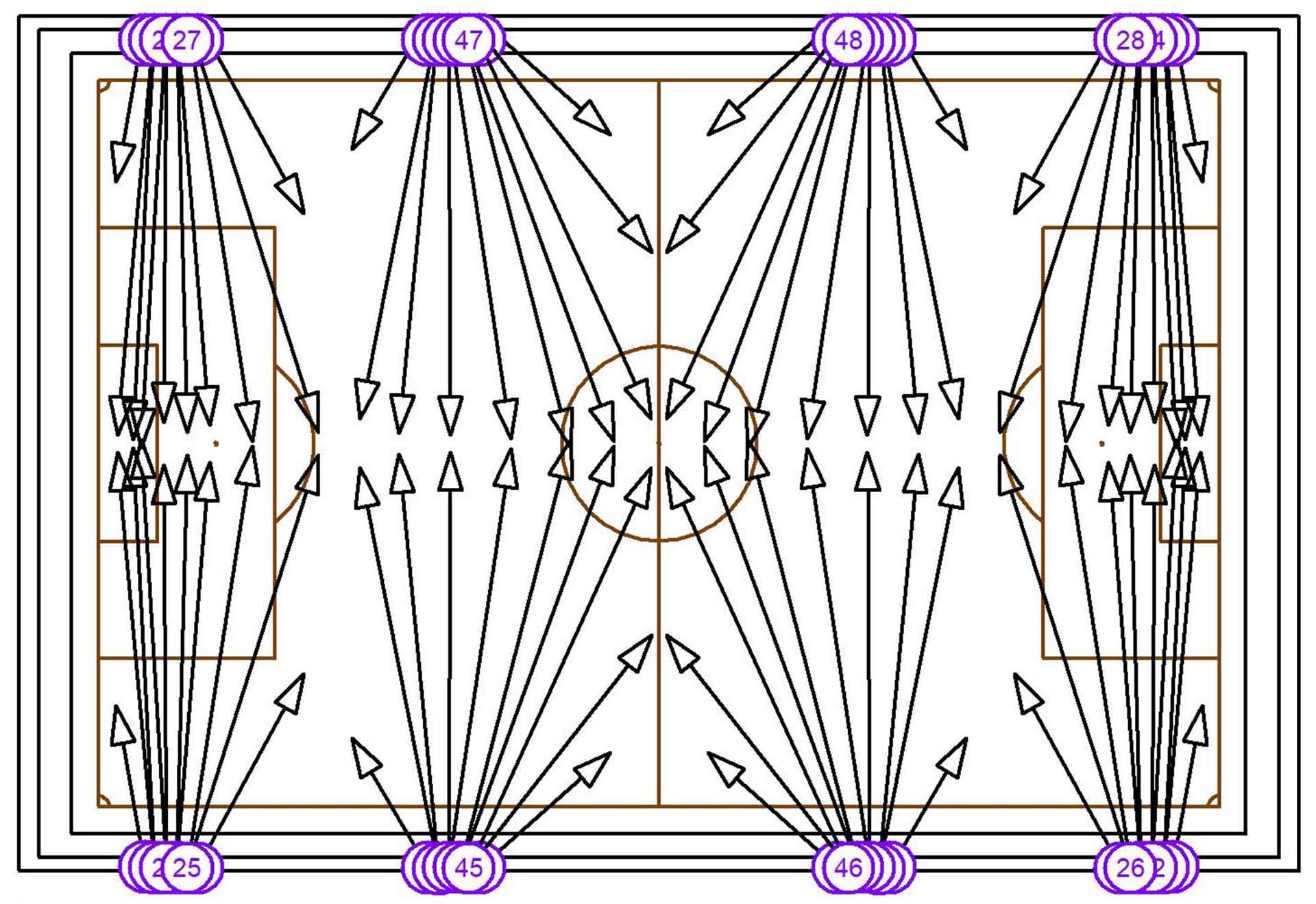
Stadium Lamp Layout Design
Recommended LED Sports Lights and Fixture Types
At Logos Lighting, we offer tailored, energy-efficient solutions like LED floodlights and high mast lights, perfect for stadium illumination. High mast lights are ideal for professional grounds, mounted on tall poles to ensure even brightness distribution over large areas. These fixtures are designed to meet the high luminous and uniformity standards required by professional sports venues, with lumens outputs ranging from 84,000 to 168,000 and wattages of 600 to 1500 watts.
For smaller, community or school fields, LED floodlights are more suitable. These fixtures offer lumen outputs from 28,000 to 70,000 and are efficient in energy consumption, equating to metal halide systems of 1000 to 1500 watts, but with much lower power usage. They are typically mounted on poles 40 to 60 feet high, providing excellent illumination with reduced glare and shadows.
Overall, selecting the right fixture depends on matching lumens, wattage, uniformity, and energy savings to your specific field requirements, ensuring optimal lighting conditions and cost-efficiency.
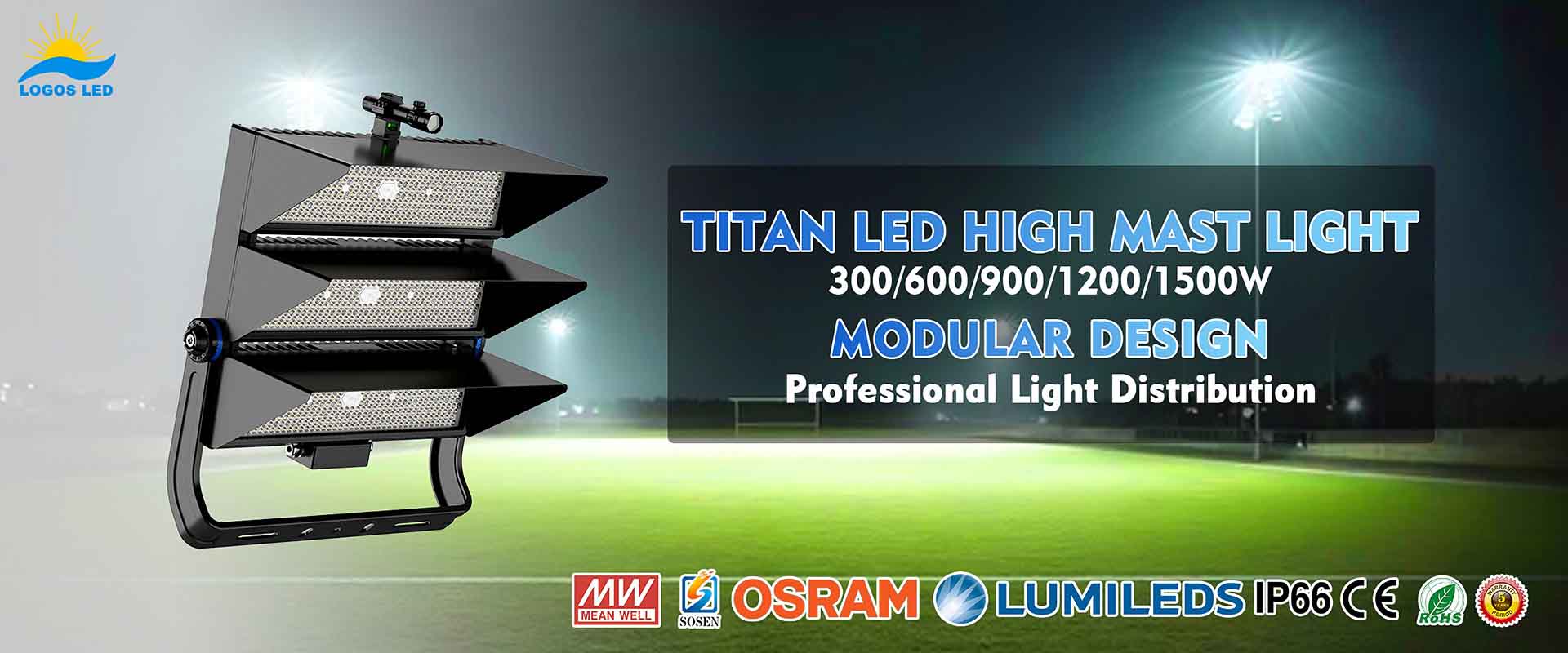
Best Mounting Methods for Optimal Football Lighting Results
Choosing the right mounting method for football field lighting requires balancing height and positioning to optimize coverage and minimize issues like glare and shadows:
- Pole Height: For professional and large stadiums, high mast poles ranging from 25m to 50m are recommended. This height ensures excellent coverage and uniform illumination across the field. Smaller community or school fields benefit from shorter poles, typically between 8m and 15m, which are more suitable for the smaller scale of these venues.
- Pole Placement: Poles should ideally be evenly distributed around the field to minimize shadows. Typically, football fields use an equal number of poles on each side to ensure balanced lighting. For larger setups, such as professional stadiums, poles can be positioned strategically near key areas like end zones and along the sidelines.
- Angle and Positioning: Installing multiple lights per pole and angling them strategically helps achieve maximum uniformity without causing glare. The optimal angles for luminaires should fall between 25° and 45°, avoiding positioning that could lead to discomfort glare.
By focusing on pole height, even distribution, and strategic angling, optimal lighting conditions can be achieved, enhancing visibility and safety for players and spectators.
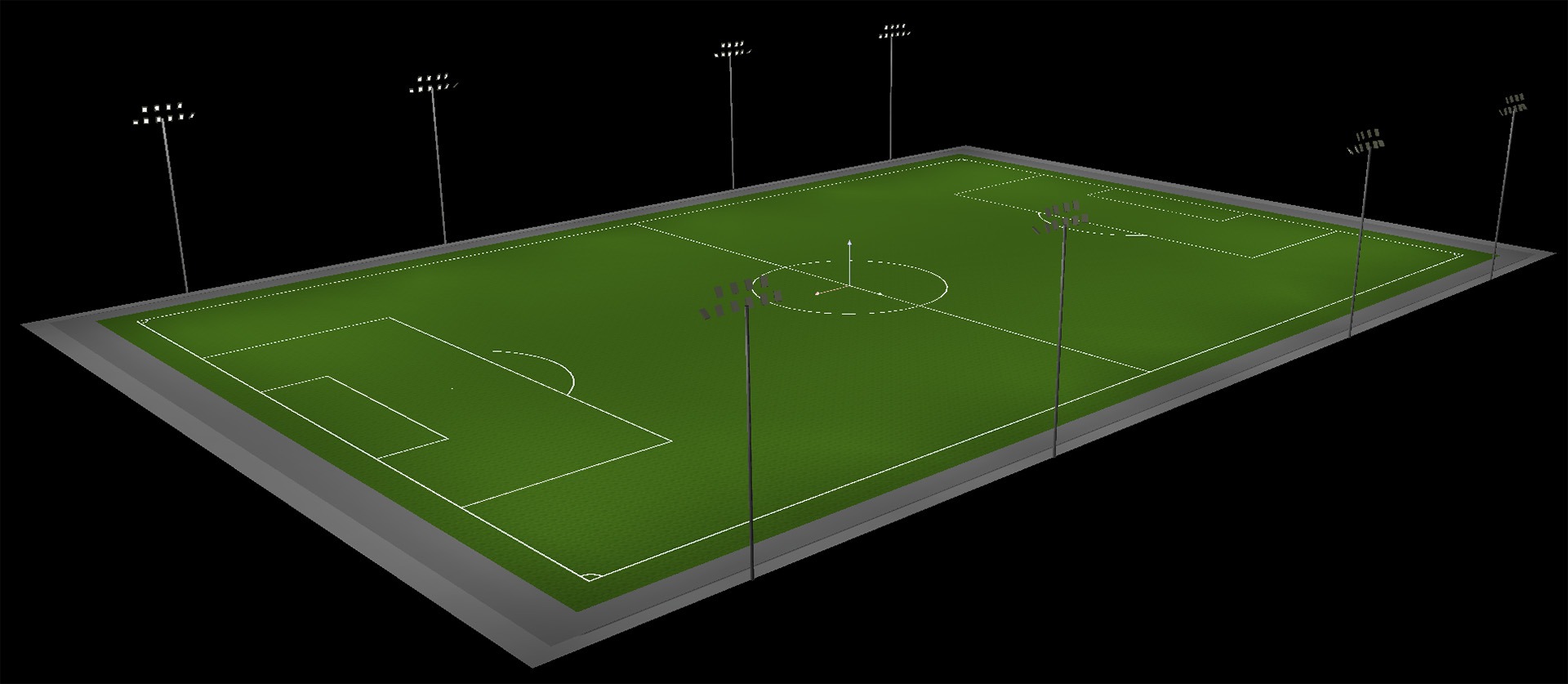
LED Stadium Lamp Layout Design
How Many Lights Should You Install on Your Football Field?
The number of lights required for a football field depends on the field size and the needed lux level:
- Professional Stadiums: These often use pole structures in each corner and along the sidelines, with 10 to 20 high-power fixtures per pole. This setup provides ample coverage and meets high illuminance standards.
- Middle-Level Fields: High school or college fields usually require around four to eight poles, each with fewer fixtures. This setup balances the lighting needs with budget and space constraints.
- Smaller Fields: Community or school fields can effectively use four poles, one in each corner, with three to six LED fixtures per pole. This configuration is suitable for recreational use and provides adequate light distribution.
Understanding lux calculations and field dimensions helps determine the optimal number of fixtures, ensuring efficient coverage and minimizing shadows.
Common Mistakes to Avoid When Lighting Football Fields
When lighting football fields, several common mistakes should be avoided to ensure optimal visibility, player safety, and a quality experience for spectators and broadcasters. Key pitfalls include:
- Ignoring Uniformity of Lighting
Uneven lighting creates shadows and dark spots that make it difficult for players to track the ball and see opponents, and it also negatively impacts spectators and broadcast quality. A common mistake is poor pole placement or inadequate fixture distribution, resulting in uneven brightness across the field. The Illuminating Engineering Society (IES) recommends a uniformity ratio (maximum to minimum brightness) of no more than 1.7:1 for professional fields and 2.5:1 for amateur play to avoid these issues. - Overlighting or Underlighting the Field
Simply installing a large number of fixtures without considering the actual light output (illuminance) can lead to overlighting, wasting energy and causing glare, or underlighting, which compromises visibility. Lighting design should focus on achieving the right illuminance levels measured in foot-candles or lux, with professional fields often requiring around 2,000 lux for optimal conditions. - Poor Pole Placement and Height
Incorrect pole placement can cause uneven coverage and shadows, especially near goal areas. Poles should be strategically placed around the field perimeter—corners and sidelines—with corner poles often taller to cover wide areas and prevent dark spots. A symmetrical and balanced pole layout helps maintain uniform lighting and reduces glare. - Neglecting Glare Control
Excessive glare causes visual discomfort and can impair player performance and spectator experience. Without proper shielding and beam control on fixtures, glare can be a significant problem. The Glare Rating (GR) should be kept below 50, achieved through precise fixture placement and using fixtures with good beam control and shielding. - Overlooking Vertical Illuminance
Focusing only on horizontal illuminance (light on the field surface) and ignoring vertical illuminance (light on vertical surfaces) is a mistake. Vertical illuminance is critical for players to see the ball in the air and for broadcast cameras to capture clear footage. Lighting design must ensure adequate vertical light levels to support gameplay and broadcasting needs. - Specifying Fixture Quantity Instead of Light Quality
Specifying a fixed number of fixtures rather than the amount and quality of light produced leads to poor lighting outcomes. The design should guarantee maintained light levels over time, accounting for fixture aging and dirt accumulation, and ensure uniformity and brightness standards are met throughout the system’s lifespan. - Failing to Consider Environmental Obstacles
Nearby buildings, trees, or other structures can block light and create uneven lighting conditions. Proper planning must consider these obstacles to avoid shadows and dark spots on the field.
Summary Table of Common Mistakes to Avoid
| Mistake | Impact | Recommended Practice |
|---|---|---|
| Uneven lighting (poor uniformity) | Shadows, hard to track ball | Maintain uniformity ratio ≤ 1.7:1 (pro) or 2.5:1 (amateur) |
| Overlighting or underlighting | Wasted energy, glare, poor visibility | Design for correct illuminance (e.g., ~2000 lux for pro) |
| Poor pole placement/height | Dark spots, shadows, glare | Place poles symmetrically around perimeter; taller at corners |
| Neglecting glare control | Visual discomfort, impaired play | Use shielding, control beam spread, keep GR < 50 |
| Ignoring vertical illuminance | Poor ball visibility in air | Ensure adequate vertical light levels |
| Specifying fixture count only | Inconsistent lighting quality | Specify light output and quality, not just fixture number |
| Ignoring environmental obstacles | Uneven lighting, shadows | Plan for obstacles, adjust pole/fixture placement |
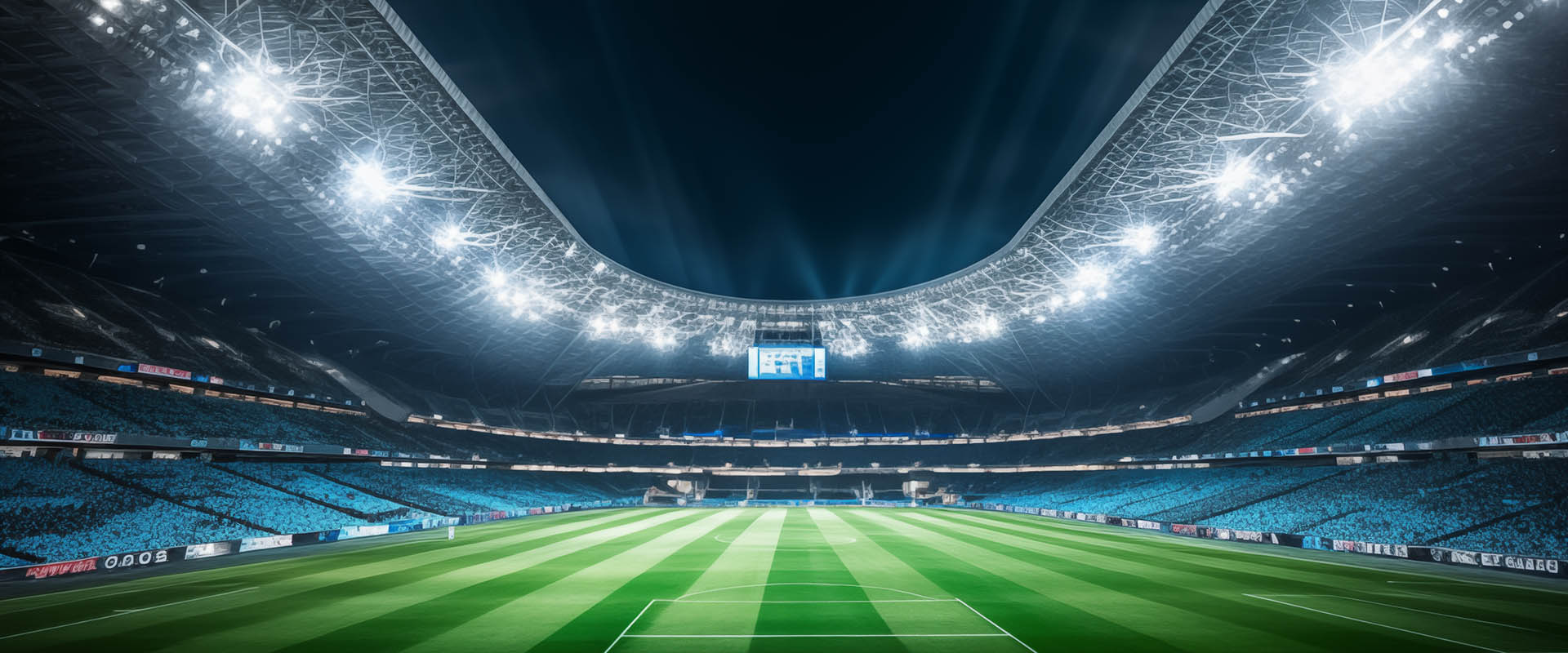
Conclusion
Football field illumination doesn’t have to overwhelm you. With clear understanding of lumens, watts, and correct planning, your field can shine bright while minimizing energy costs. High-quality LED solutions paired with strategic design mean safer, enjoyable play. Need help with your Football Stadium Light installation or upgrade? Reach out to us and we’ll get you started right.
Request A Free Quote Now!
Send us a message if you have any questions or request a quote. We will get back to you ASAP!
